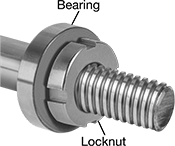Filter by
System of Measurement
Thread Size
Face Style
Locking Type
Material
Thread Spacing
Finish
Specifications Met
Hex Nut Profile
Thread Type
DFARS Specialty Metals
Export Control Classification Number (ECCN)
REACH
RoHS
Spanner Wrench Style
Thread Direction
Fastener Strength Grade/Class
Drive Style
Fastener Strength Rating
Performance
Nylon-Insert Locknuts
Medium-Strength Steel
Thread Size | Wd., mm | Ht., mm | Fastener Strength Grade/Class | Insert Max. Temp., ° F | Specs. Met | Pkg. Qty. | Pkg. | ||||||||||||||||||||||||||||||||||||||||||||||||||||||||||||||||||||||||||||||||||||||||||||
|---|---|---|---|---|---|---|---|---|---|---|---|---|---|---|---|---|---|---|---|---|---|---|---|---|---|---|---|---|---|---|---|---|---|---|---|---|---|---|---|---|---|---|---|---|---|---|---|---|---|---|---|---|---|---|---|---|---|---|---|---|---|---|---|---|---|---|---|---|---|---|---|---|---|---|---|---|---|---|---|---|---|---|---|---|---|---|---|---|---|---|---|---|---|---|---|---|---|---|---|
Zinc-Plated Steel | |||||||||||||||||||||||||||||||||||||||||||||||||||||||||||||||||||||||||||||||||||||||||||||||||||
| M45 × 3 mm | 70 | 45 | ISO Class 8 | 220 | DIN 985, ISO 10511 | 1 | 000000000 | 000000 | |||||||||||||||||||||||||||||||||||||||||||||||||||||||||||||||||||||||||||||||||||||||||||




























